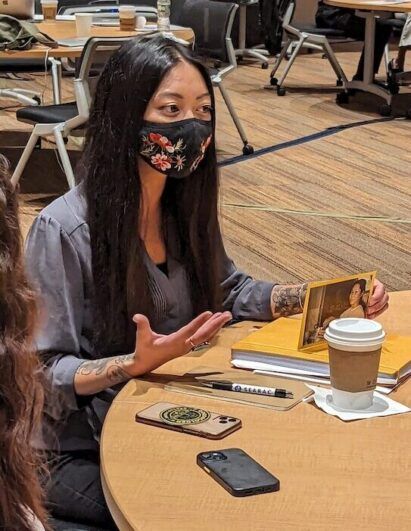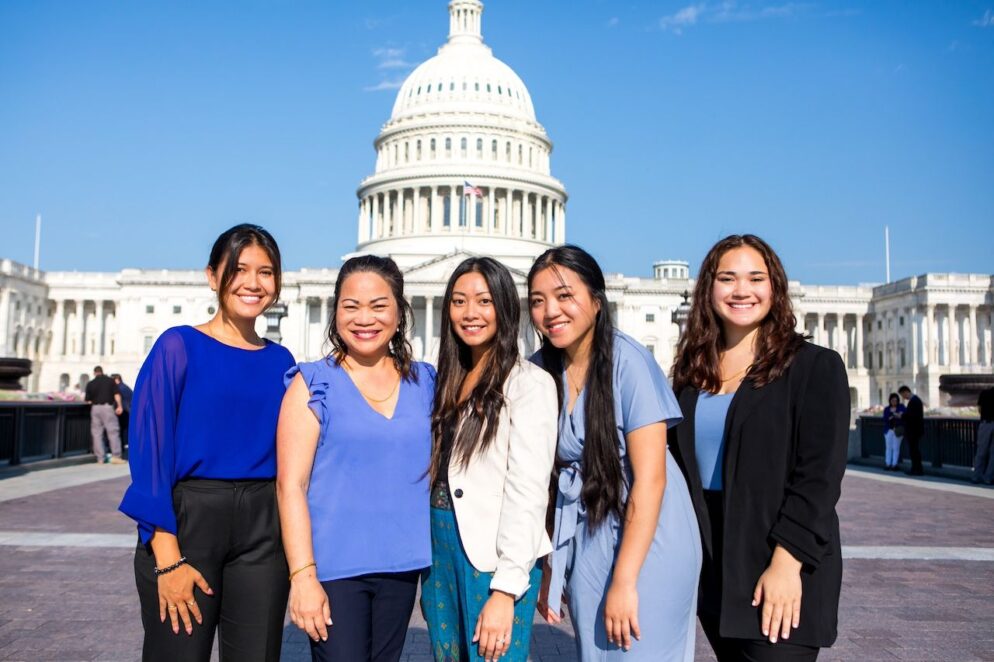By Lasamee Kettavong
I was surprised to find my voice trembling as I spoke about my mother during a grounding activity on the first morning that my fellow participants and I gathered for SEARAC’s 2023 Leadership and Advocacy Training. It’s not too unusual for me to feel a multitude of emotions when I think about my mother, who was a refugee from Laos in the third of four waves of refugees arriving to the United States, but right then, I realized that I might have assumed too confidently that I would be “just fine” at this training.

In preparation emails, SEARAC LAT organizers had asked us to bring a photo that meant a lot to us for this activity, and I had tucked away a film photo taken of my mother in the late ’90s. She is stirring rice to make khao thom in a classic, Southeast Asian style pot. It has black plastic handles sticking up over the sides and is silver and, most importantly, giant. Her expression is playful, eyebrows raised, a gentle smile playing around the corners of her lips, amused at my brother, who has chosen her as his subject. For the most part, my peers around the table shared photos of their families too. And it made sense that that was the case: every single person at the training was there because of their heritage, because they wanted to make a difference for their families and their communities, and this training was part of that process.
New in my role and also new to advocacy as program manager at the Laotian American National Alliance, I was nervous. Impostor syndrome had me feeling like I was effectively fooling everyone in the room into thinking that I was an excellent representative of my organization and the Lao American community, but that was entirely beside the point of our gathering. I wasn’t there for myself. I was at LAT to learn about how I could use my voice and my story to serve and improve the lives of my community members, in the short- and long-term.
If not now, when? If not you, who?
As a writer and educator, I was delighted to have a worksheet given to me that guided us through an activity through which we would develop our “story of now, story of self, and story of us.” During this exercise, we identified urgent challenges that our community members faced and experiences relative to the whole; then we peered inward to find experiences or values from our own personal histories that were connected to the collective in order to emphasize and ask for change in issue areas that affect our communities.
Before LAT began, we had self-selected the issue area tracks that we were most interested in, and my category was health. After walking through the worksheet sections, we gathered in small groups based on selected categories, discussed our experiences and writings, and practiced what having a legislative meeting with Hill staffers would be like. For many of us, we had never done this before. Our small group decided that we would ask that the Health Equity and Accountability Act be reintroduced and sponsored to help reduce SEAA healthcare disparities, and for each meeting, we would need to have someone share their story.
I once again found myself choked up, but this time, it was because I was talking about my father’s experience going through care facilities in Texas and ultimately, his death.
The most impactful takeaway: the first revolution is internal
Staffers for our representatives and our representative themselves see a lot of people and hear a lot of stories, but evoking emotion with one’s honest account of an experience, whether a single event or a lifetime lived, plants you in the memory of the person to whom you’re speaking. Giving a name, face, and voice to a policy issue that is an example of why we must act and speak up for change paints a real picture to representatives to more effectively and accurately tell our stories.
Though it is truly a long game (working to improve the lives of our community members), not sharing our stories and experiences means that we remain silent, invisibilized, and at its worst, that we are complicit in perpetuating inequality.
“I’ve found that one of the most difficult tasks for myself is believing that my story is worth sharing. But LAT helped me recognize that my story truly is valuable, powerful, and an important tool in advocacy work.”
For more blogs in our #LATSpotlight series celebrating 25 years of SEARAC’s Leadership and Advocacy Training Program, see:
From Long Beach to Cambodia: Finding my community and claiming my voice by Cheryl Yin
Applying leadership and advocacy skills — for life by Va Her
Purely in community by Cat Bao Le




